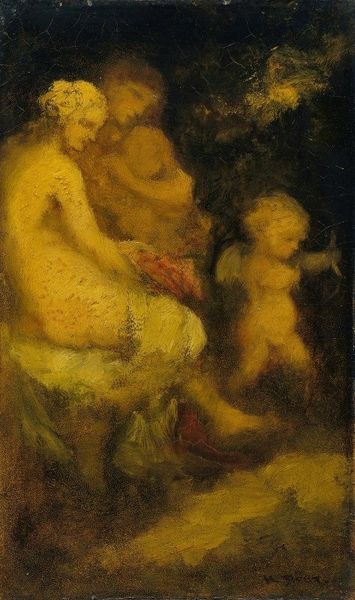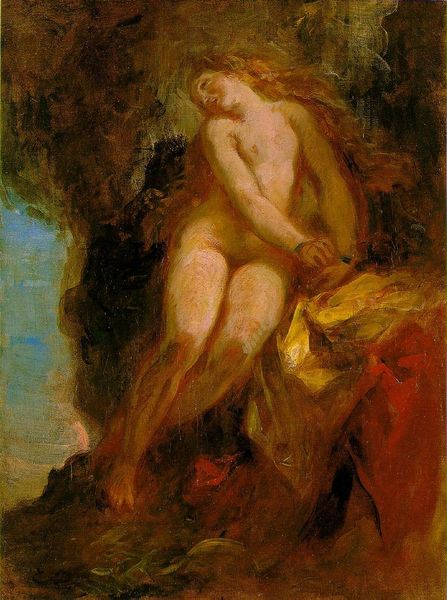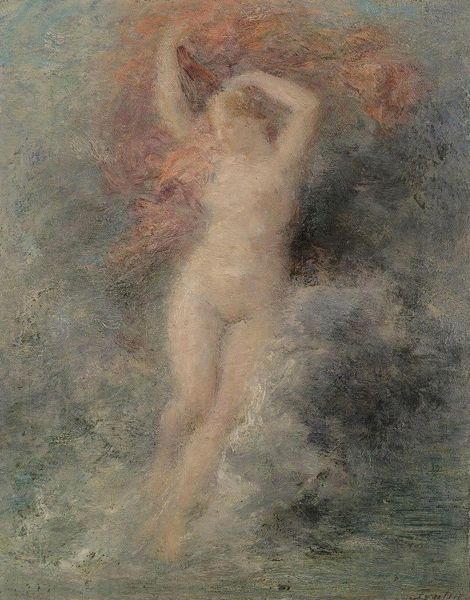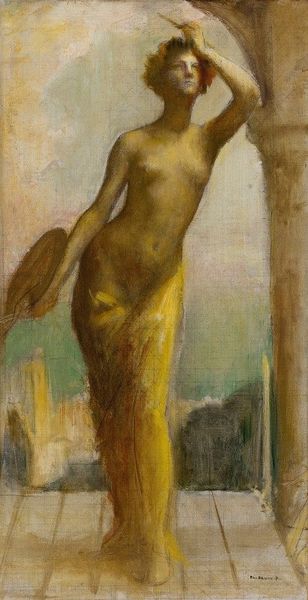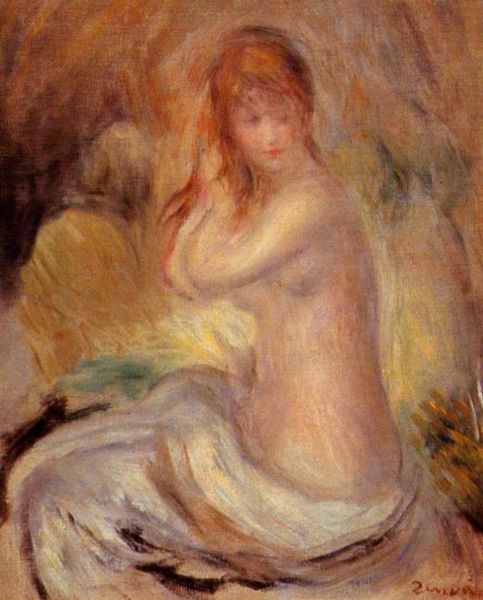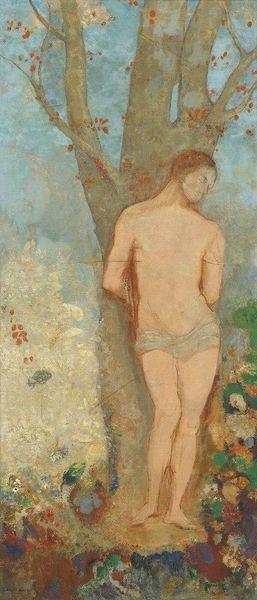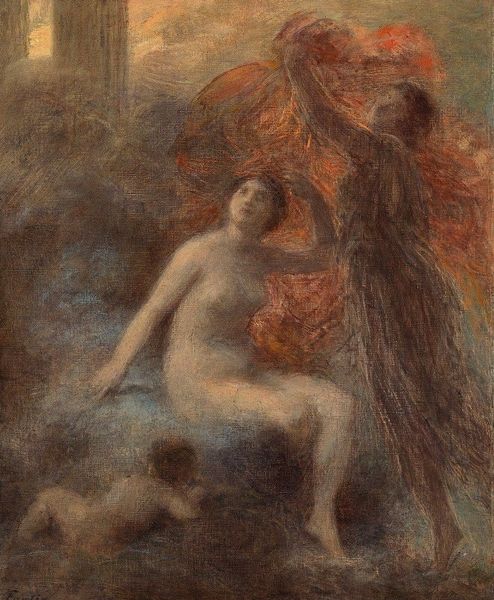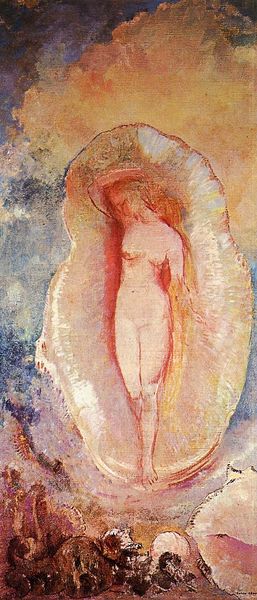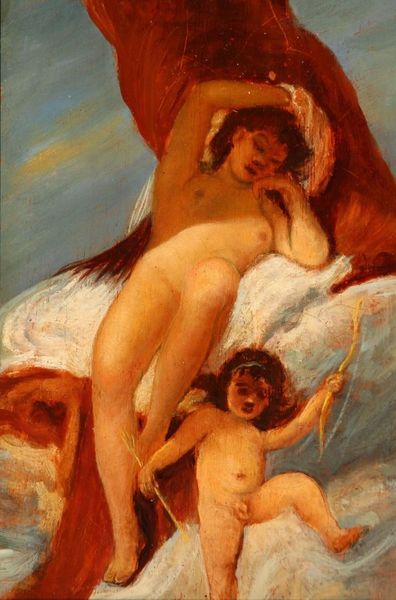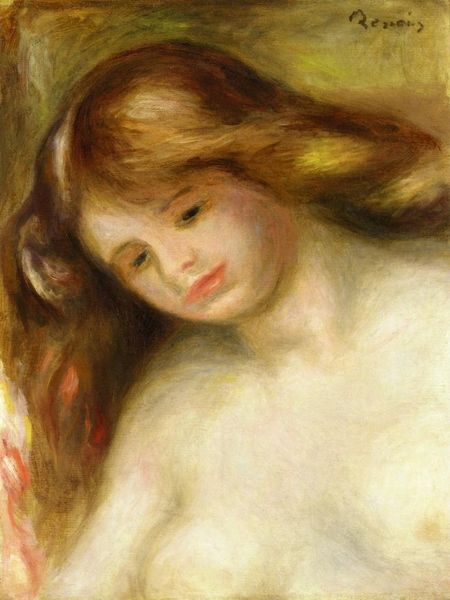
Copyright: Public Domain: Artvee
Curator: Diaz’s Venus disarming Cupid, circa 1855. An oil-on-panel work. The paint application is wonderfully loose. What’s your immediate sense of it? Editor: Hazy. Warm. Like a half-remembered dream… a fleeting encounter bathed in honeyed light. Curator: Note the contrast. Venus, luminous and almost fiercely physical. Cupid is painted in softer, more yielding brushstrokes. A figure very nearly consumed by the surrounding golden fog. Editor: It's a poignant scene. Cupid, usually such a confident symbol of desire, looks almost… fearful. He clings to Venus, as if for protection from the very arrows he's known for. A matriarchal force in action. Curator: Yes, and consider that tension formalistically: The artist utilizes short, broken brushstrokes for Venus. Implying dynamic, barely constrained energy and agency, quite in opposition to the more diffused application of pigment for Cupid. See the assertive pose, dominating light, and its structural integrity, contrasted to soft innocence. Editor: Interesting. She seizes his arrows, literally stealing his power. Is this a depiction of the power shift in relationships or society at large, or perhaps the battle between innocence and experience? The viewer can perceive that a goddess could never fully vanquish Cupid, love will return. The symbol for passionate love cannot be controlled for too long. Curator: Observe the surface and handling, though. It seems, rather, to deal primarily with a set of contrasts. Note how Diaz deploys the dark background to set off and define these opposing dynamics within the panel. How form works. Editor: Still, that background is menacing. Consider how many times darkness represents the unknown future in myth and fable. Perhaps she has snatched them away temporarily. Is she protecting him, or someone else from the arrows of Cupid? Curator: We can speculate as to possible narratives implied in this artwork. But what we actually perceive as viewers are shapes, colors and values deployed on the panel to embody a clear visual dynamism. Editor: Agreed. Its dreamlike quality also gives us much to ponder when we move back into consciousness, contemplating romantic love, familial affection, the arrows and heart symbols, or lack thereof. Curator: I think our close reading has hopefully illuminated not only its overt mythological subject, but also how the formal choices of this Romanticism artwork make it compelling. Editor: Indeed. By investigating those signs and artistic choices, one will hopefully appreciate the emotional complexities held by these simple materials.
Comments
No comments
Be the first to comment and join the conversation on the ultimate creative platform.
